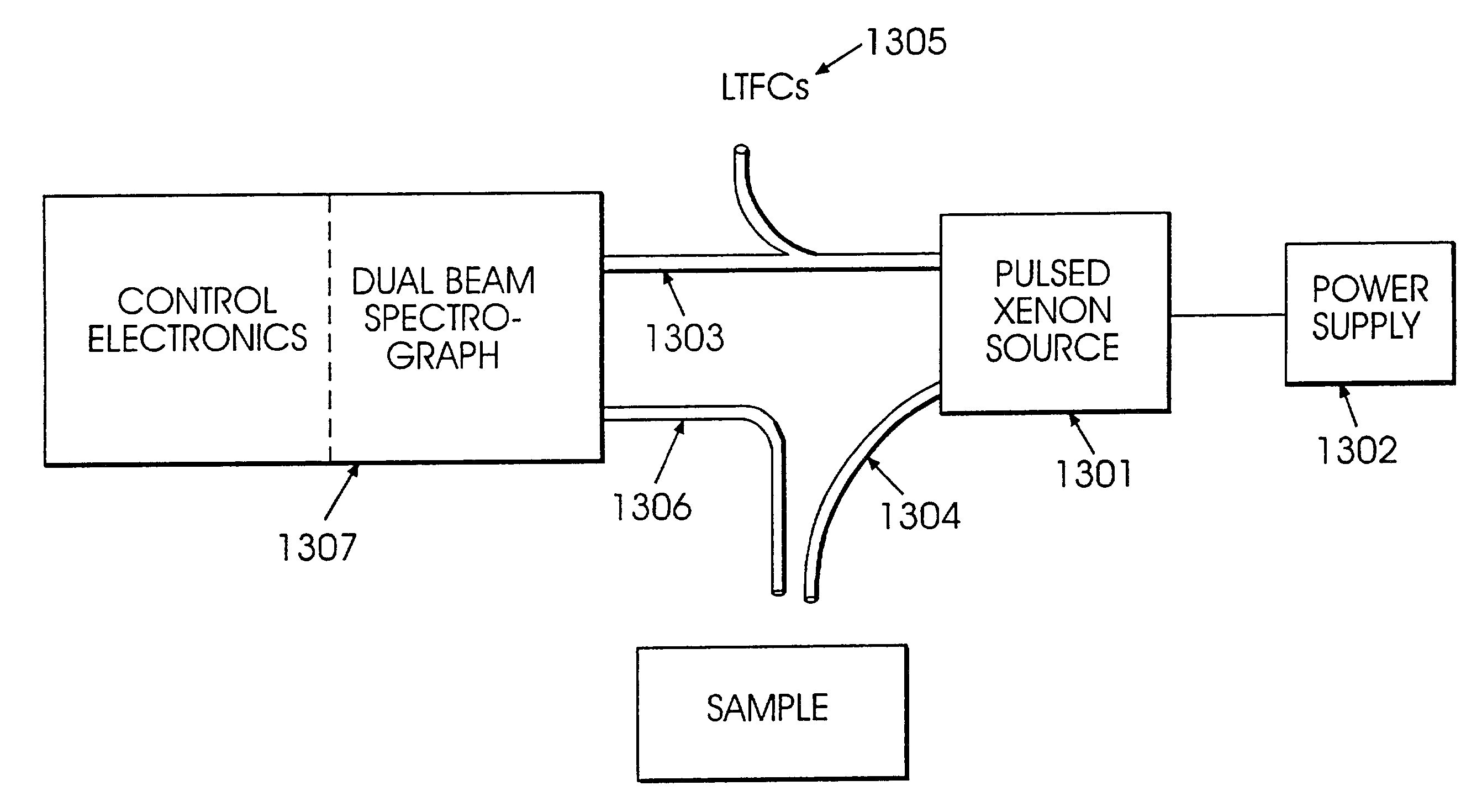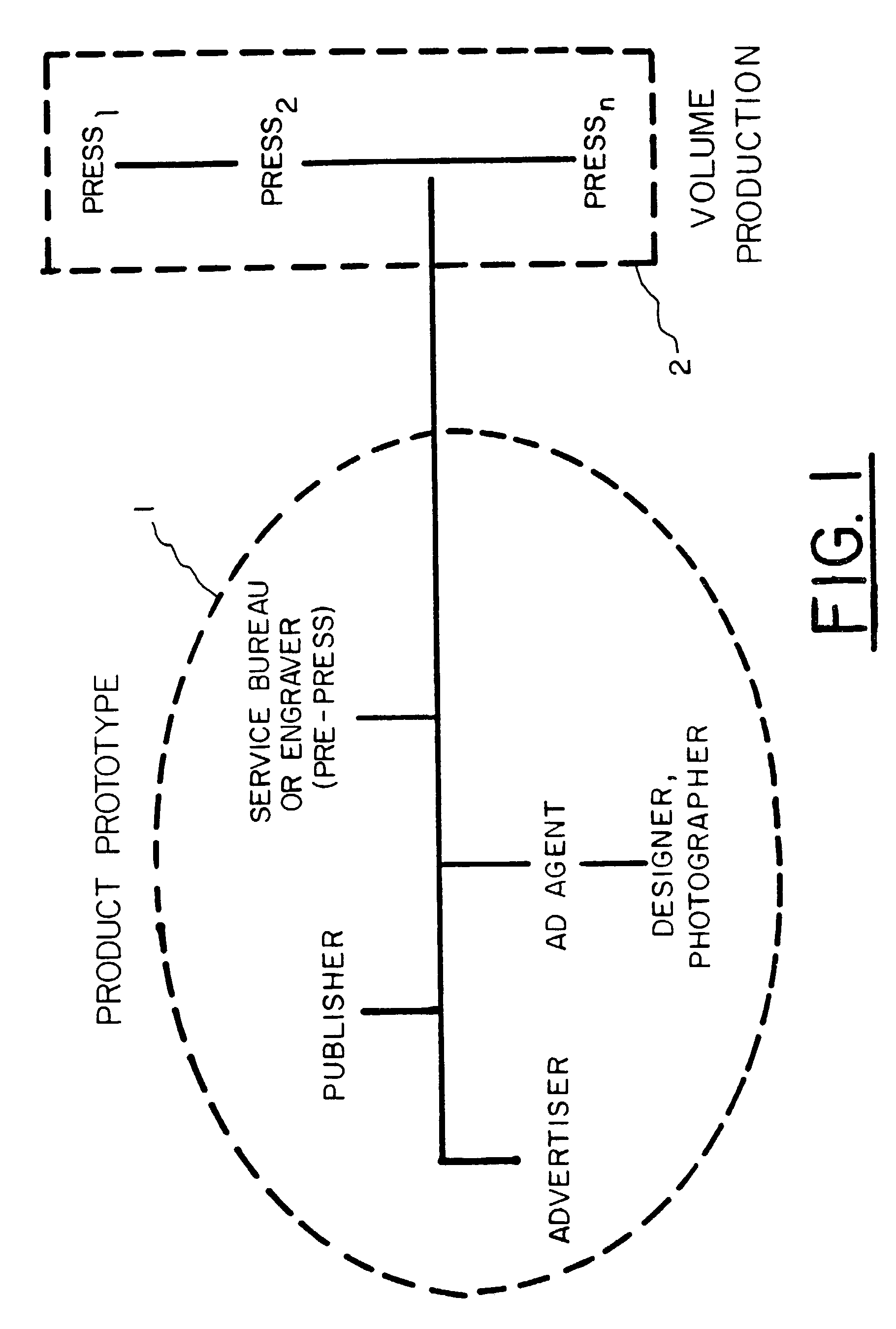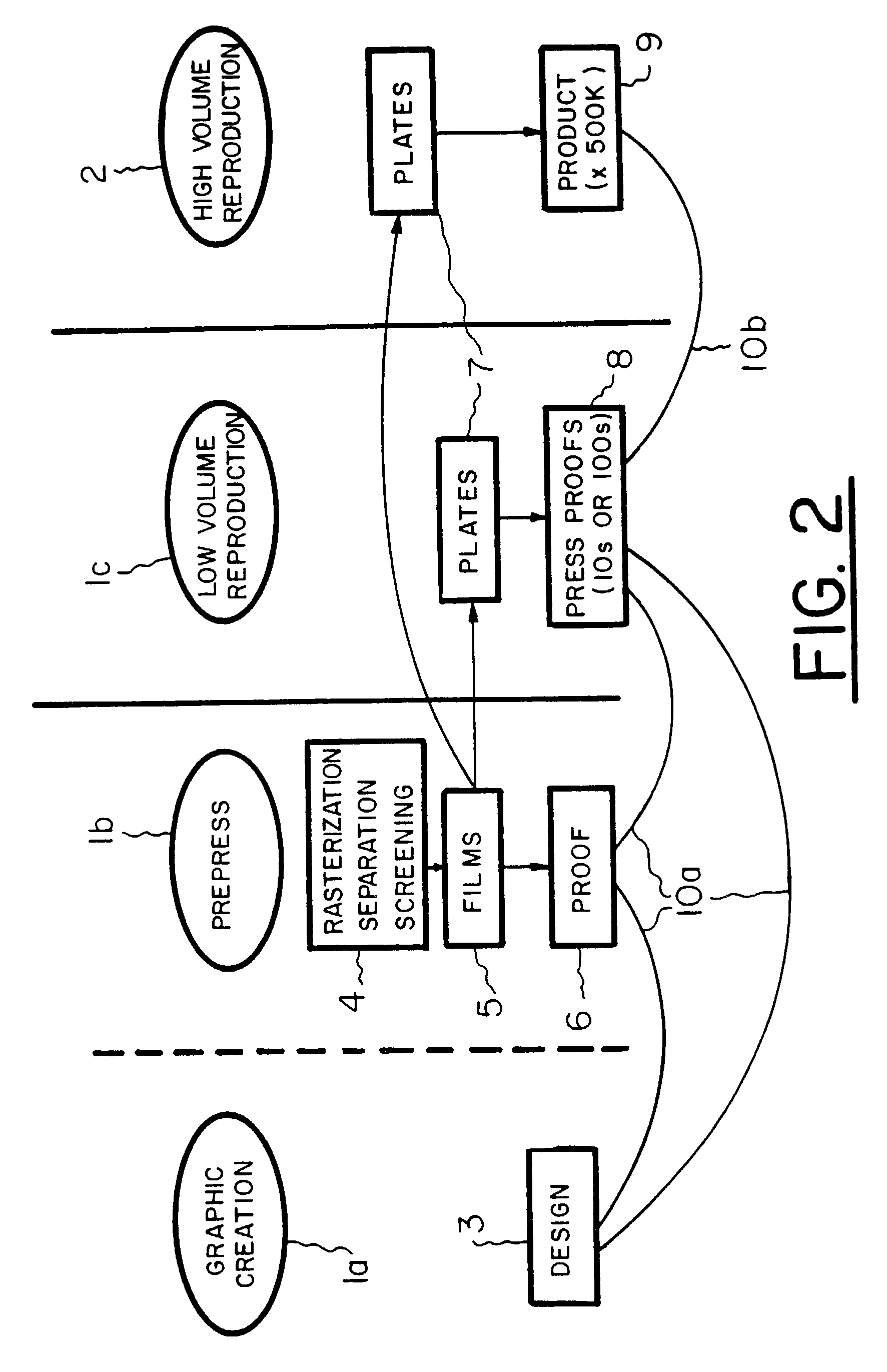Overall product cost may decrease with shipping expense.
At the same time, however, the challenge of maintaining
uniform quality across a network of production sites increases.
Nevertheless, printed color varies within a press run and from site to site because there have been only limited means of coordinating control of product appearance among sites.
Analogous problems also arise in other media, particularly now that
digital video images can be edited in real time and broadcast directly.
However, the consistency (or
repeatability) of these processes makes them even more susceptible to regional variations in quality across the production sites than
lithography and its relatives.
For all of the printing technologies mentioned, there is a common problem of uniform and accurate
color reproduction.
However, acceptance of computer-to-plate technology will blur the boundary between prepress 1b and production 1c.
The transactions in the approval process involve one or more generations of static proofs which are prepared with limited regard for the capabilities of the final, volume-production devices.
The process results in
idle time for equipment and personnel and waste of
consumables (paper, ink etc.) Furthermore, it usually does not give the print buyer any direct say about the appearance of the ultimate product unless the buyer travels to the printing
plant, an expensive proposition.
However, the essential lack of feedback is also prevalent in the commercial environment as well.
Because of the manner in which his subsets are modeled, the method severely limits flexibility in performing GCR.
This has ramifications for the viability of the method for sets of rendering colorants other than those used in the closed printing system, as explained below.
However, calorimetric calibration for the purposes of building
gamut descriptions in support of proofing relationships among devices is not disclosed.
In other words, the artificial sensor will be unable to distinguish colors that a human can distinguish.
The problem was that the production equipment changed with time (even within a
production cycle) so that static calibration proved inadequate.
Operator override is possible and is necessary when the
colorimeter goes out of calibration, since it is not capable of calibration self-check.
The drawback of the Sodergard et al. system is that color control lacks the necessary precision for high quality
color reproduction.
This method lacks any provision for calibration or
verification of the devices at either end of a link and also lacks the data structures needed to support remote proofing and negotiation of color approval.
Bonino et al. thus employs photometric characterization of devices and lacks a calorimetric characterization.
The MCT thus does not provide a
file format defining the full specification of color transformations in the context of distributed production and color-critical remote proofing.
Representation of devices in the
ICC Profile Format is limited in supporting “scnr” (
scanner).
“mntr” (video display monitor) and “prtr” (printer) device types, and is not readily extendable to other types of devices.
Typically, calibration devices are limited in one or more of the following ways.
First, many of the devices require manual measurements of samples under circumstances conducive to operator error.
An unskilled operator is ill-equipped to recognize likely problems in the data.
Second, an instrument may require physical contact with the copy and consequent scuffing or transfer of fingerprints and
skin oils.
Samples are routinely affected by this before they are measured and the accuracy of a dataset is compromised.
The devices
clutter the
workspace when not in use and require significant operator involvement in measurement.
Third, an instrument may require calibration by the operator.
Likewise, proper use, cleaning and maintenance of white calibration plaques often used in calibration are not usually performed.
Thus, typical calibration
instrumentation of a rendering device is not sufficiently fool-proof to serve the intended purpose of automating the process of interdevice color
reproduction.
 Login to View More
Login to View More  Login to View More
Login to View More 


